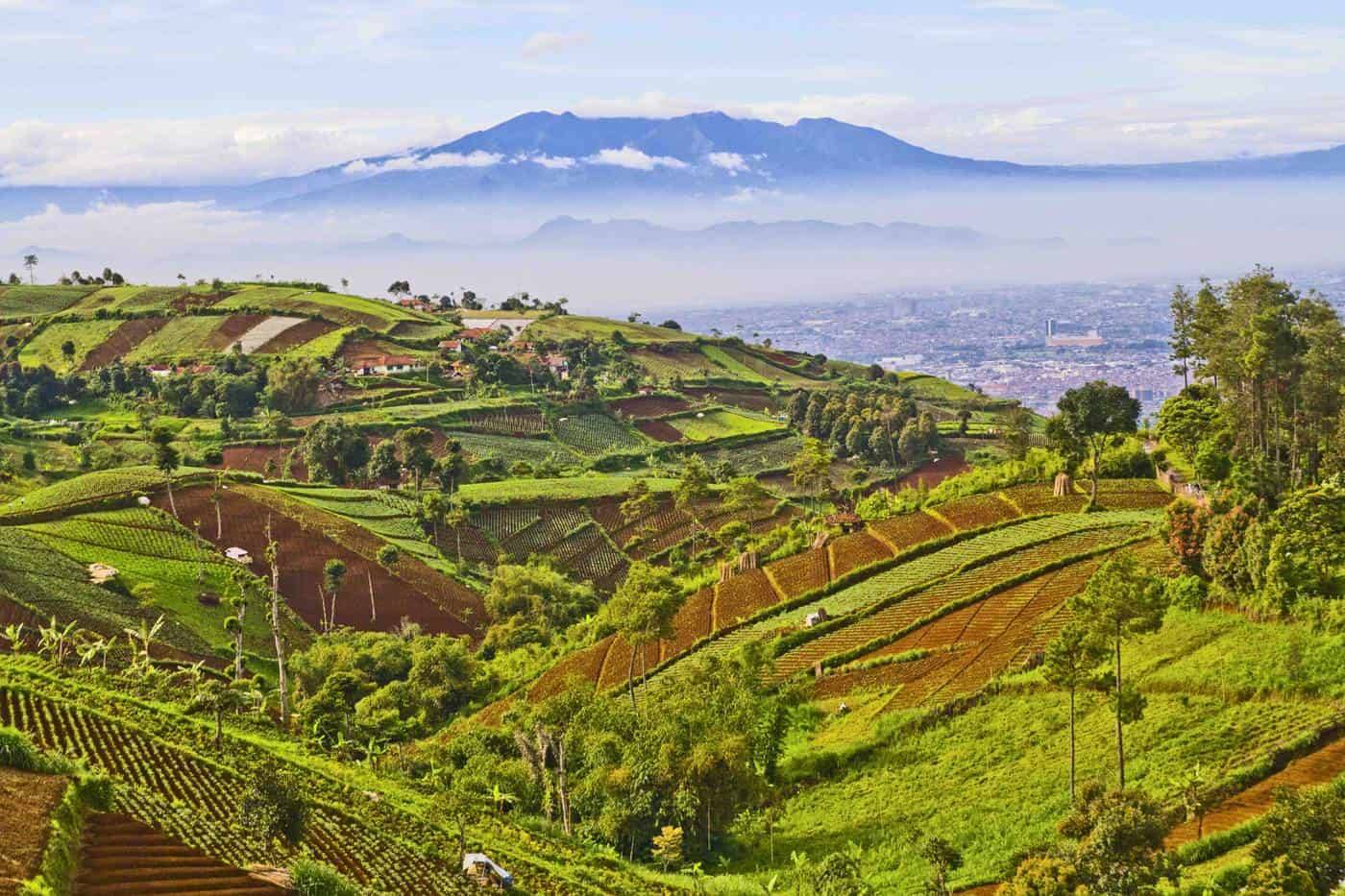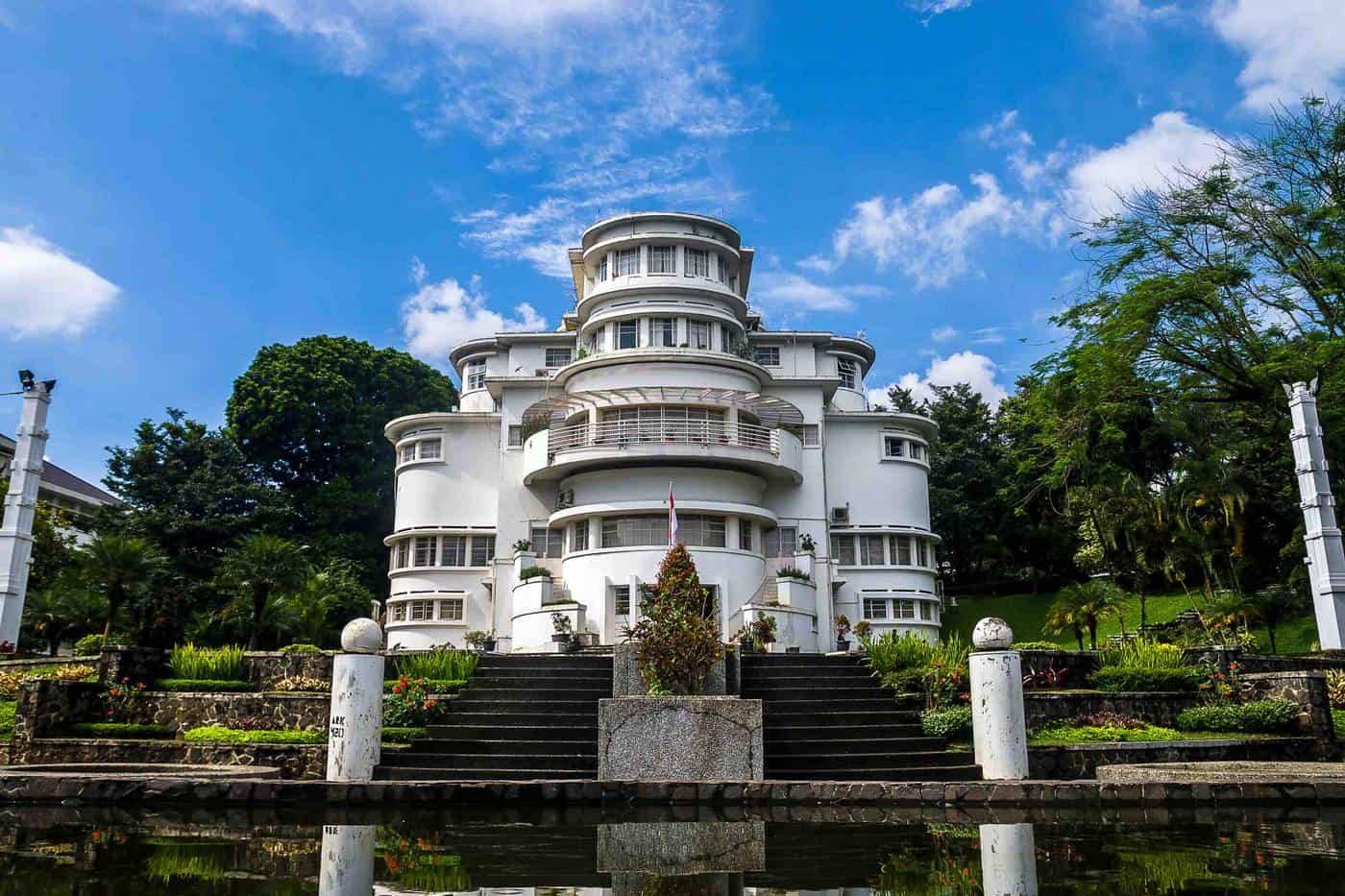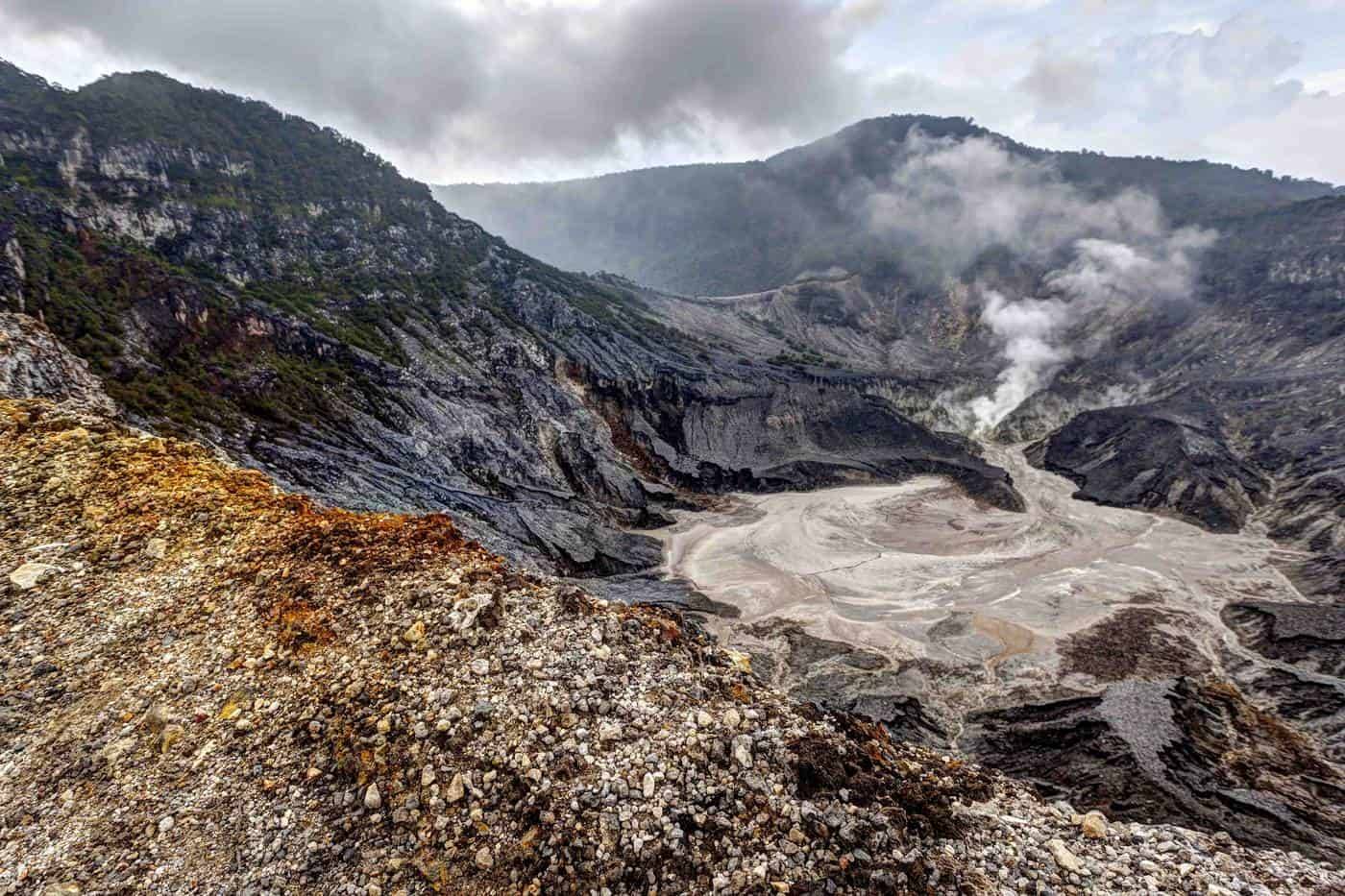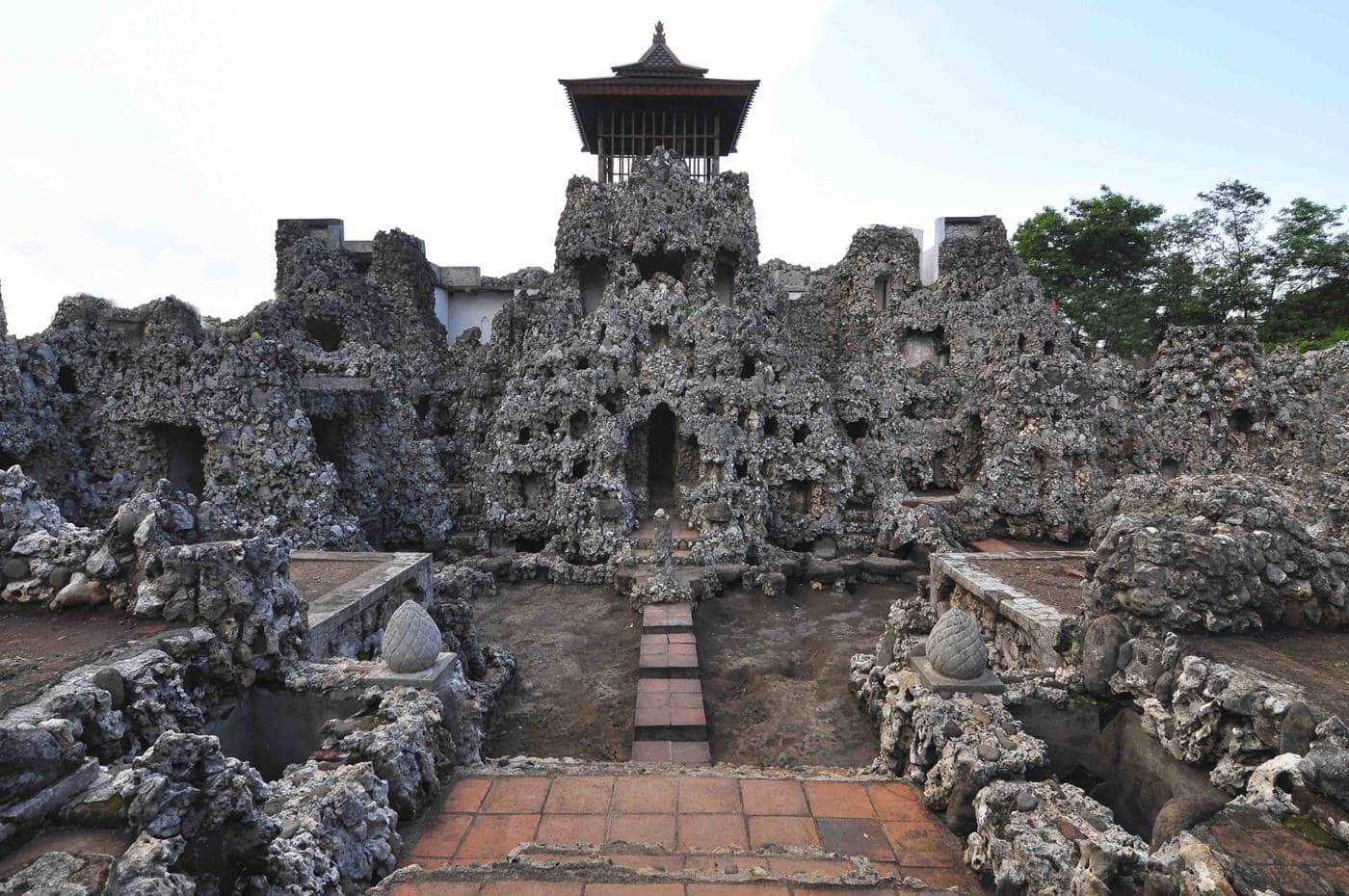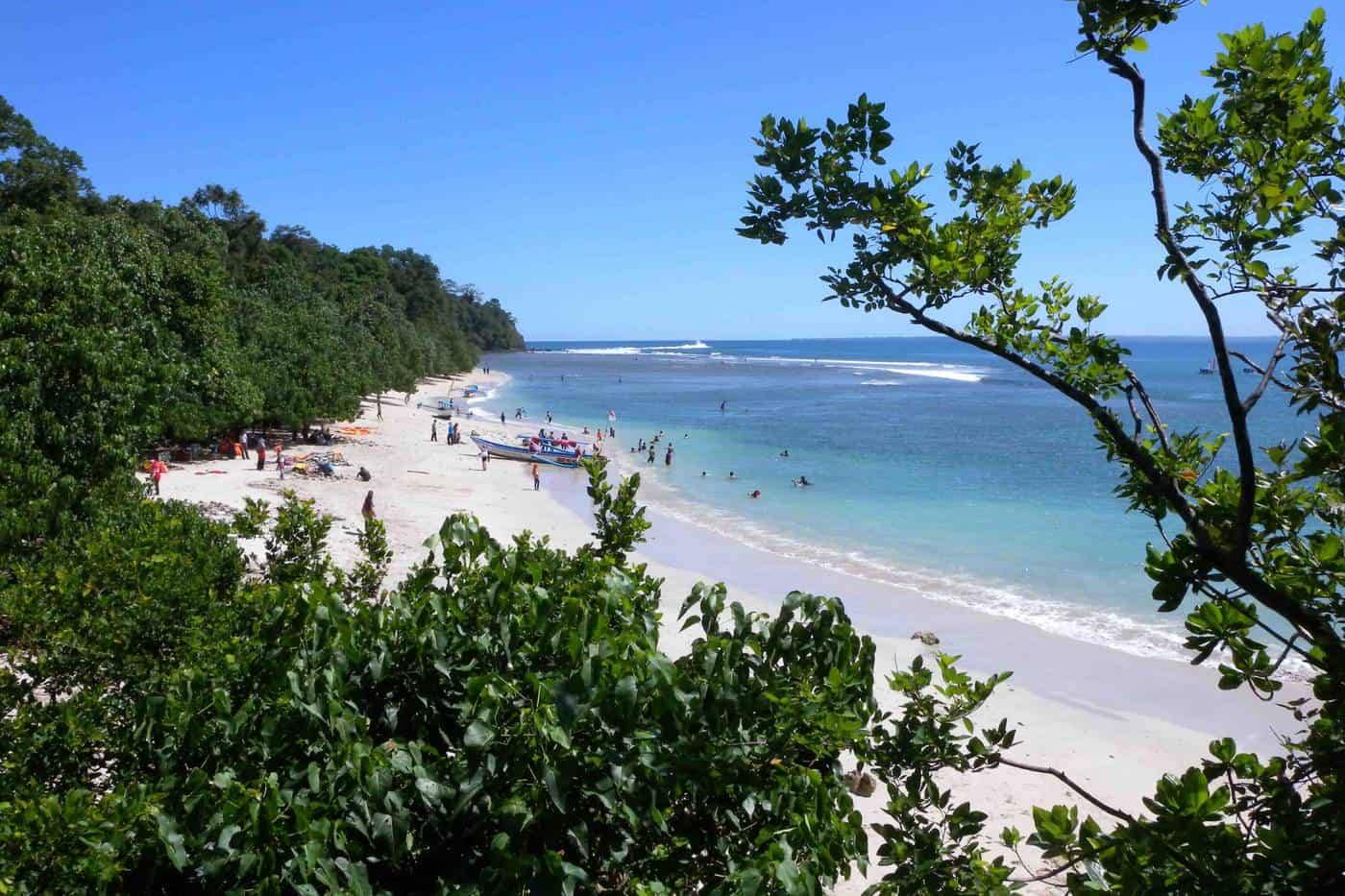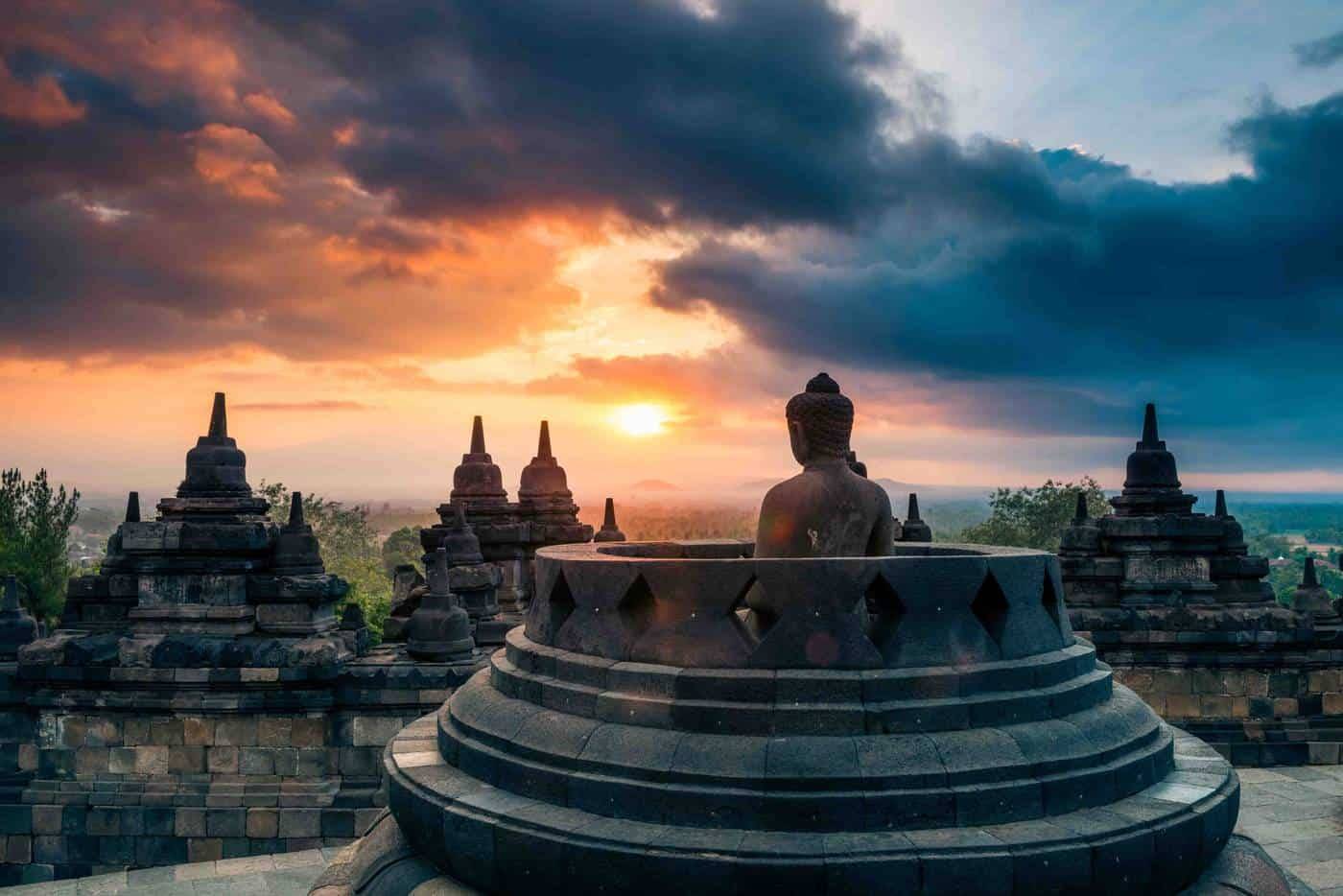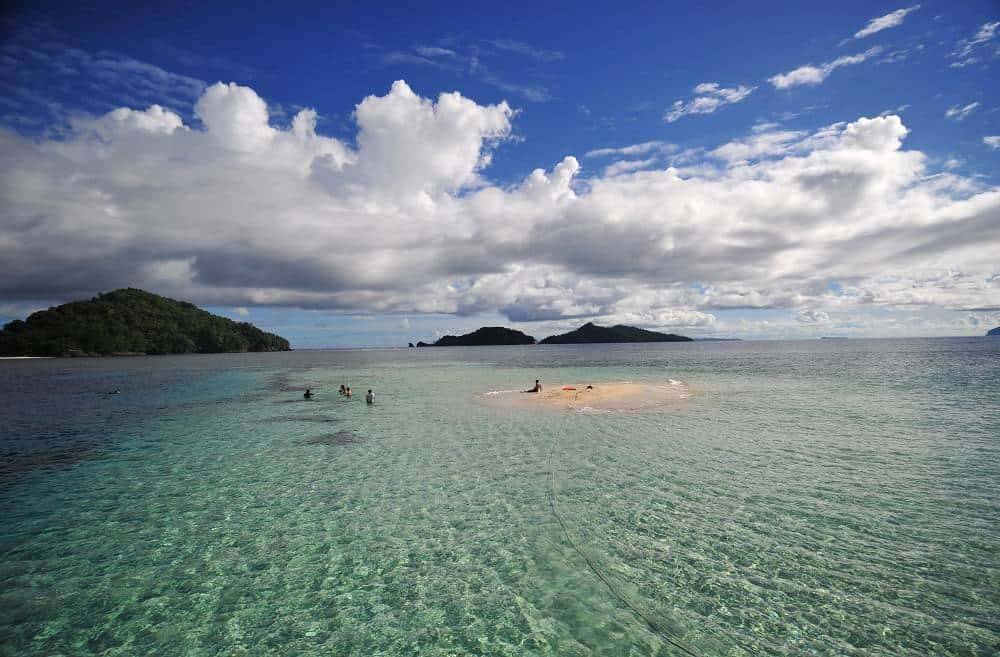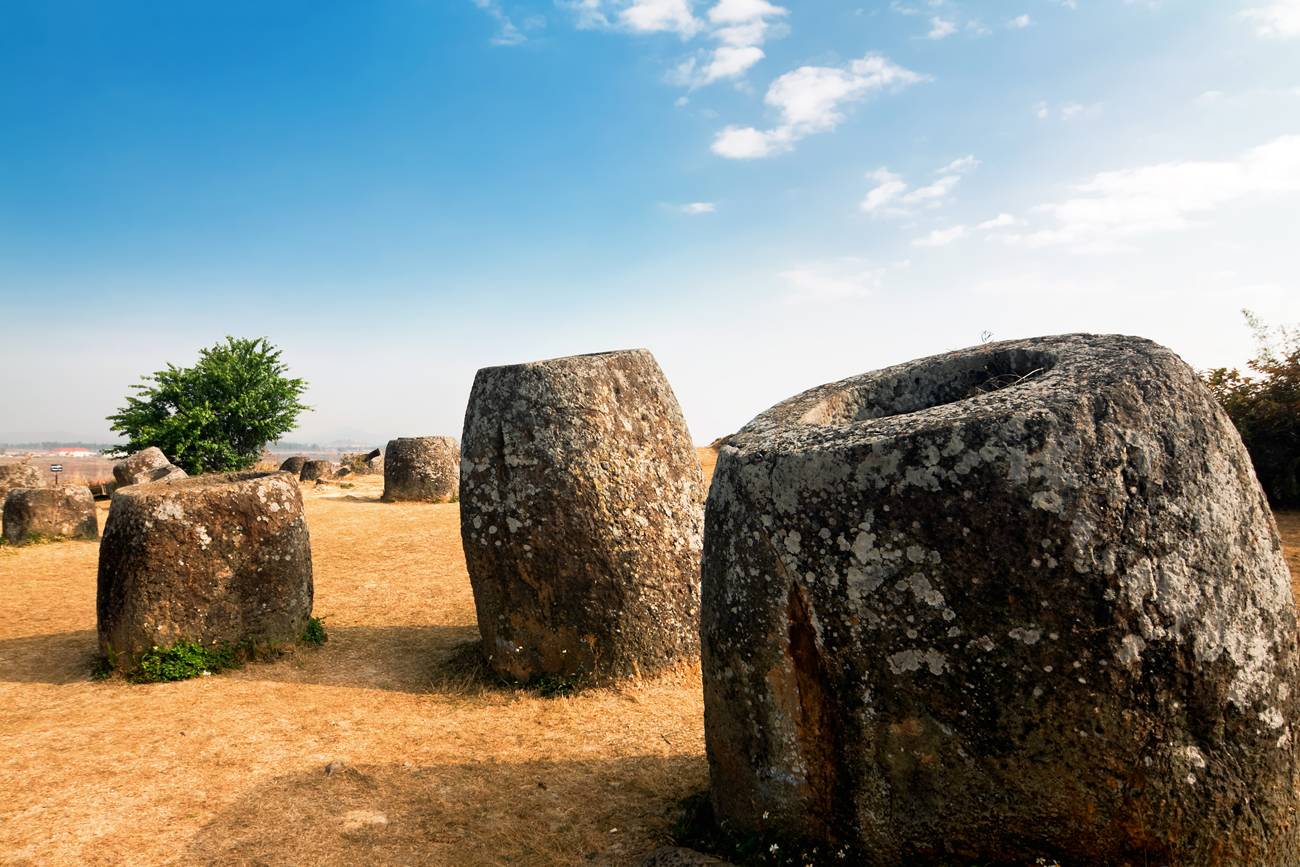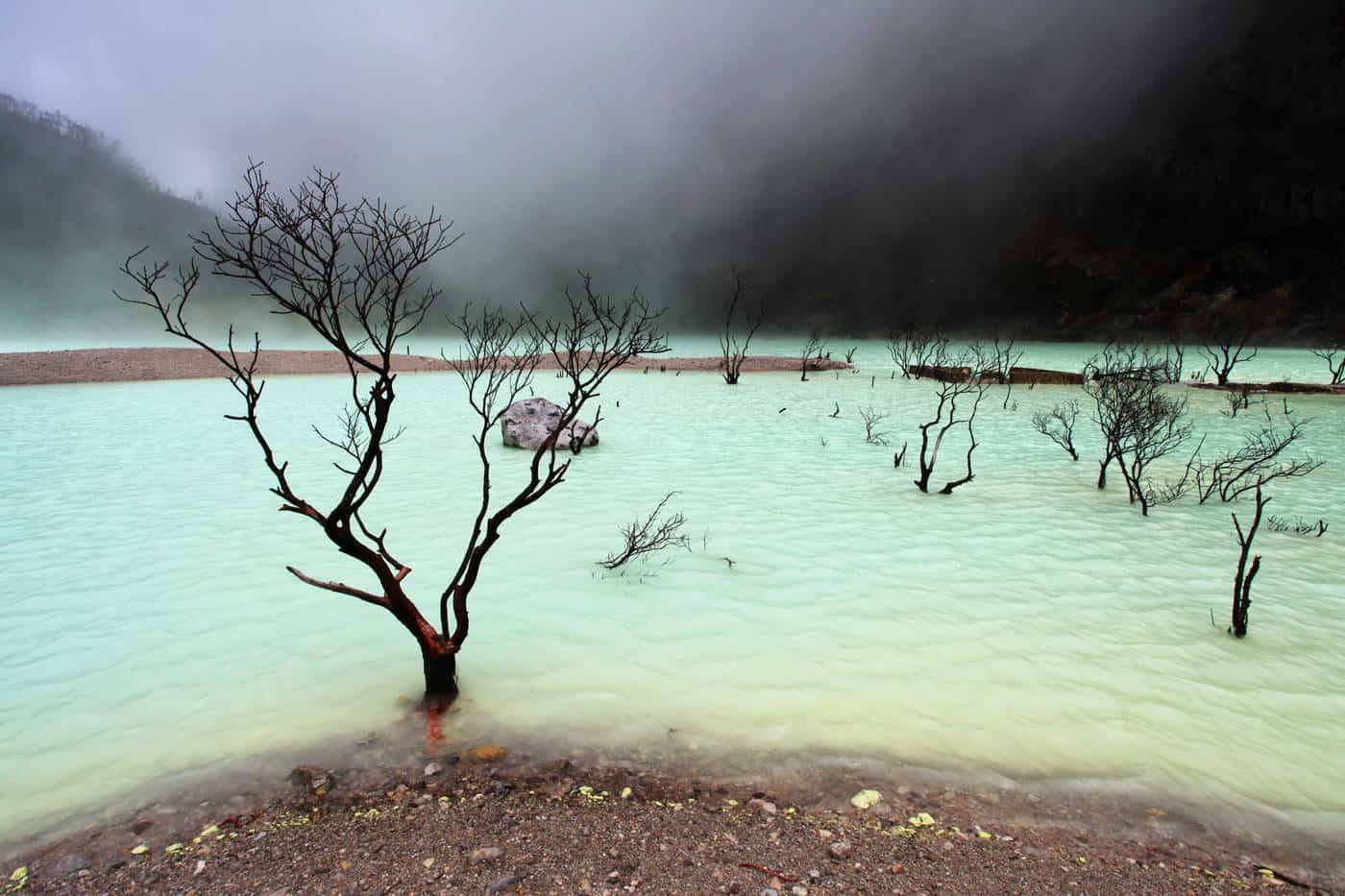
WEST JAVA – BETWEEN A MEGALOPOLIS AND STEAMING ACID LAKES
There truly is much to discover around Jakarta, and while the city lovers will likely want to stay around the capital, enjoying its endless surprises, others might prefer to search around the countryside. West Java is one of the most visited parts of Indonesia, literally overflowing with attractions for any type of traveller.
JAKARTA “THE BIG VILLAGE”
Indonesian capital Jakarta was born in 1527, and today, it is a sprawling mega-city that works from its teeming freeways to its old Dutch colonial town (the one-time Batavia) now known simply as ‘Kota’, or a ‘city’ for Indonesians.
The locals call Jakarta “The Big Village”, yet nothing indicates a sign of a village here. In fact, Jakarta is a typical Southeast Asian metropolis with all that one would imagine it to be: an immense network of highways, roads and lanes flooded with noisy vehicles and buzzing scooters, ultra-modern skyscrapers, enormous shopping malls and myriads of entertainment options.
On the other hand, Jakarta is home to traditional street markets and ancient religious architecture, and also some of the largest slums in the world. And all that is serving to almost 10 million inhabitants and thousands of curious visitors.
BOGOR
Enjoying a pleasant climate and abundant rainfall, Bogor is a green oasis amid a volcanic region and an ideal place for walking and trekking.
Bogor`s best attraction is its botanic garden – famously lush and relaxing domain of Kebun Raya Bogor features a small tropical rainforest, ponds with gorgeous flowers and a Zoological Museum with lots of rare creatures.
There is an interesting workshop where the local Wayang Golek Puppets are made and traditional puppet performances available for tourists. Bogor Palace and its large water gardens is a site for all architecture enthusiasts and photographers.
The nearby Puncak is a popular weekend destination for the Jakarta residents is a lovely nature reserve defined by forested mountains and tea plantations. The area provides brilliant purpose-built attractions like a zoo and safari park, botanical gardens, tea plantation tours and a water park – be prepared for crowds, though.
GUNUNG HALIMUN SALAK NATIONAL PARK
Bogor is the gateway to the magnificent wilderness area – Gunung Halimun Salak National Park. The reserve has been successfully protecting endangered endemic fauna and flora since 1992, and it is worth seeing in the dry season.
The territory comprises of Mount Salak and Mount Halimun, and it is a great destination for thrill seekers and nature lovers. Activities like white-water rafting, jungle trekking, tracking a leopard, exotic birdlife watching and volcano hiking are amongst the favourite.
Climbing the Halimun Volcano surely takes some effort, but the expedition includes delightful hot springs, warm mud, gorgeous waterfalls and undisturbed nature, while Mount Salak is easily accessible and less challenging.
Cikaniki or Sukagalih Villages are the starting points to both volcanoes, with nice homestays and good eco-tourism infrastructure.
ESSENTIAL EXPERIENCES IN BOGOR
- Kebun Raya Bogor – the gardens of Bogor is a small tropical rainforest, ponds with gorgeous flowers, orchid gardens and Zoological Museum, including the traditional puppet performance and nearby Presidential Palace
- Puncak – a lovely forest area with tea plantations and several purpose-built attractions, e.g. zoo and safari tours, botanical gardens, tea plantation tours and a water park
- Gunung Halimun Salak National Park – some of the most pristine countrysides in Java, tropical waterfalls and active volcanoes (access from Cikaniki or Sukagalih Villages), canopy walk, forest walk, picturesque landscape, traditional villages, climbing to the crater of Mout Salak
- Pelabuhan Ratu – a stunning surfing beach and a lovely holiday destination on the Indian Ocean coast
- Gunung Padang – one of the largest megalithic site in Southeast Asia (near Karyamuki village)
TO GET TO BOGOR: fly to Jakarta, catch a bus from Jakarta to Bogor (1-2 hrs) or a train (30 min). Then take a shuttle bus/minivan to Kabandungan or self-drive (2-3 hrs).
BANDUNG
Not far from Jakarta, protected by a fortress of volcanoes, Bandung is the third largest city in Indonesia. Except for being the industrial hub of the country, it is also the centre of traditional Sundanese arts and culture.
The Dutch nicknamed it “The Paris of Java” during the colonial era, and it might well have been for a reason.
Music, dance and handicraft are at their best throughout this thriving university metropolis, and fantastic factory outlet shopping is available on every corner.
Art-deco buildings but also modern design, fascinating museums and theatres, colonial landmarks and dazzling markets will greet the visitors, and the traditional Wayang Golek rod puppet theatre is a must-see.
ESSENTIAL EXPERIENCES IN BANDUNG CITY
- City self-guided tour – Bandung has many architectural jewels and walking or using angkot (minivan taxi) is a perfect way to explore the city. The city landmarks are: Villa Isola, Gedung Merdeka, Gedung Sate, Cipaganti Mosque, Great Mosque of Bandung or Grand Hotel Preanger
- Museums – rainy days can be spent in one of the Bandung`s museums, including Bosscha Observatory, Geological Museum, Miltary Museum, or the Sri Baduga Maharaja Museum
- Braga Street – the famous historical promenade dating back to the colonial era with lots of elegant cafes, boutiques and restaurants with delightful European ambience (Braga Culinary Night is a lovely open-air food market held each Saturday)
- Burangan Street Culinary – the legendary food kingdom of Bandung offering all sorts of local delicacies, dazzling markets, street food stalls, taverns and restaurants
- Sudirman Street – popular street food area for all food lovers with the local cuisine at its best and Jeans Street is known as a shopping paradise
- Wayang Golek – traditional Sundanese rod puppet theatre is a spectacle
- Lembang floating market – one of the key attractions of the city (kayak/canoe hire, floating huts, fantastic food)
GREATER BANDUNG
Bandung is not only a place of great historical value but also it offers outstanding natural attractions, including volcanoes, crater lakes, hot springs, jungle waterfalls, tea plantations and lush tropical forests, among which the Kawah Putih crater lake (2430 m) is the most striking.
With well-developed tourist infrastructure and fairly good roads, it is easy to move around independently.
WHAT TO DO AROUND BANDUNG
Lembang – rent a scooter and get lost in the northern countryside of Bandung; find the Keraton Cliff for the best views of the city, pay a visit to Mount Tangkuban Perahu volcano and its crater Kawah Ratu (Queen`s Crater), Kawah Upas viewing point, Kawah Domas crater, enjoy Sari Ater hot springs with lovely restaurants where you can try traditional Sundanese cuisine, Juanda Forest Park (excellent hiking opportunities), Dago Tea House Walk (2 hrs walk, waterfalls, hot springs).
Kawah Putih (White Crater) – 5o km away from Bandung there is a striking crater lake not to be missed. There are mud pools, fumaroles and hot springs around the acid lake. NOTE The best way to get around is hiring a scooter in Bandung and drive southwards (the lake is at Ciwidey), but you can also book a tour from Bandung.
Situ Patengan – not far from Kawah Putih, there is another gorgeous lake surrounded by tea plantations where you can rent a paddle boat and have a relaxing time, ideal for picnics and walking.
Situ Bagendit – another lake that is known for bamboo rafting and idyllic scenery, perfect for photography (70 km from Bandung, to get there drive towards Tasikmalaya).
TO GET TO BANDUNG: By plane from Jakarta or by public transport/private minivan or self-drive from Jakarta (1-3 hrs depending on traffic).
THE EASTERN REGIONS OF WEST SUMATRA
Travellers heading to the Central Java or East Java can choose between 2 routes: via the coastal Cirebon or the inland Tasikmalaya. Both cities are worth visiting, predominantly for their cultural and historical heritage.
Cirebon is known for ancient palaces and mosques, and Tasikmalaya offers a wonderful insight into the Javanese rural life and spectacular Indian Ocean vistas.
Nevertheless, whichever route you decide to go with, either of them features beautiful landscapes and picturesque scenery.
ESSENTIAL EXPERIENCES IN THE EASTERN REGIONS OF WEST JAVA
- Cirebon – visit the home of Sultan of Kasepuhan (Keraton Kasepuhan), Kraton Kanoman, Taman Wisata Gua Sunyaragi water palace and its mystic caves, Grave of Sunan Gunungjati and the Great Mosque of Cirebon
- Tasikmalaya – hand-made woodcraft, Payung Tasik umbrella, Bordir Tasik embroidery
- Kampung Naga – a traditional village is situated at the Ciwulan River banks, with a well-preserved simple way of life (rent a scooter and drive around the rural area, enjoy the picturesque setting and tranquil environment)
- Mt Galunggung – climb the 510 steps to get up to the top of the volcano and its crater lake (jaw-dropping views),
- Ciparay hot springs and waterfall – take a bath in hot spring or cool down in the refreshing waterfall after the tiring climb of Gunung Galunggung
- Pandandaran – a small seaside resort is a popular holiday destination for the Javanese, black volcanic sands and the wild Indian Ocean create a spectacular image, major points of interest are the Karang Tawulan beach and the impressive Green Canyon
TRAVEL TIP
West Java is home to the phenomenal Sundanese cuisine, renowned for fresh, often even raw ingredients which are served wrapped in a banana leaf. Every visitor should try some of the warung or street food, such as nasi timbel, lalapan, karedok and mie kocok – seriously delicious!
WHEN TO TRAVEL
The dry season in Java generally runs from May till October with peak tourist season in July and August (try to avoid these months as the prices go up and most of the places are overcrowded).
Good time to visit Java seems May-June and Sep-Oct. However, rain can occur at any time in this part of the world. Also, weekends and local public and school holidays will be very busy.
HOW TO GET THERE
Fly to Jakarta.
If travelling overland from Sumatra, use the Indonesian ferry services departing from Bakauheni (Lampung/Sumatra) to Cilegon (Banten/Java). Then catch a bus to Jakarta (3-4 hr trip).
For all international flights visit www.momondo.com or www.skyscanner.com
For all domestic Indonesian flights check out www.garuda-indonesia.com
